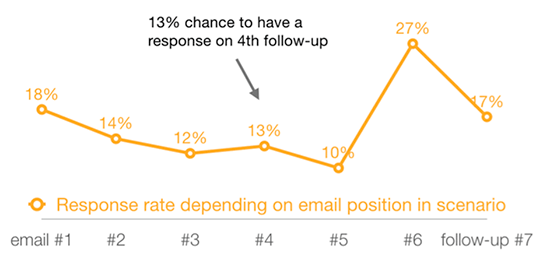Want to know how email nurture campaigns can boost your business?
You’re in the right place!
Every business owner knows the importance of developing relationships to help their marketing campaigns. But not everyone is as clued up as they should be on email nurture campaigns.
We are here to fill in the blanks.
We’ve created this simple step-by-step guide on planning and executing email nurture campaigns that will help convert your email subscribers into paying customers.
So, let’s get started.
What are email nurture campaigns?
An email nurture campaign does what it says on the tin – nurtures your subscribers by educating, building relationships, and spreading awareness about your brand. Think of email nurture campaigns as investments in your target audience – the more you make your subscribers feel valued and close to your brand, the more likely they are to become money-spending customers.
We know what you’re thinking… people are too busy to read emails; my content will probably be ignored or forgotten about.
This is not the case. Email nurture campaigns deliver some of the highest conversion rates out of any marketing method. The key is ensuring you send the right content to the right people at the right time. By informing your leads on who you are and why you are the best at what you do, you can cultivate strong and successful email nurture campaigns that will turn prospects into profits!
Here’s how to make it work:
Step 1: Consider the buyers’ journeys

Before you start shouting about how amazingly awesome your product is and how it can solve all of your subscribers’ problems, you need to make your audience aware of the problems they are facing.
The beauty of email nurture campaigns is that they can take your readers on a buying journey that leads them to realize that they desperately need your product or service. By making your prospects aware of the problems they face (and yes, many may be unaware!), you can offer a solution that fits their needs. Put simply, your product should be the answer, not the option.
Step 2: Be the expert
People buy into people, so it’s important that you position yourself as the expert in your industry. Email nurture campaigns provide you with a solid platform that you can use to gain respect and trust from your audience. If you’re selling cameras, use your campaigns to show that you know everything there is to know about cameras. Do the same whether you’re selling dog food, luxury cars, or anything else.
One of the easiest and most effective ways to show your knowledge and expertise is to offer free guides or newsletters to people who subscribe to your email list. By educating and informing your audience, you build trust in your brand and guide your readers towards the end goal – buying your product or service.
Step 3: Build hype
Nothing builds hype like a little bit of teasing! You’re in an incredibly strong position because you know all the exciting things your company has in store for the future. Maybe you’re about to launch a new product, or perhaps you have an important event coming up.
Whatever is on the horizon for your company, use your email nurture campaigns to offer intriguing snippets of information. If you have any customer review examples from users sampling your new products, include them in your campaigns too.

Anticipation creates interest, so use your email nurture campaigns to create hype and awareness about anything that will drive future sales.
Step 4: Copywriting is king
Whether your subscribers choose to read your emails depends on how engaging, interesting, and intriguing your content is. Every word you write counts. from your call to action right the way through to your filler words. But of course, what makes your readers open your emails in the first place is your all-important subject lines.
It doesn’t matter what is in your email – if your subject line doesn’t capture your readers’ attention, they will exit out of the email. To encourage the best open rates, you should also keep your subject line short with the most important words at the beginning.
And remember, while creating intrigue is always a good thing in marketing, you should still make sure your subject line relates to the topic of the email. Your readers get bombarded with emails on a daily basis, so if you’re going to send out vague subject lines such as “Have You Got a Minute?”, the answer is probably going to be “no!”
Step 5: Remember to follow up

Not everyone who subscribes to your mailing list will end up buying your product or service. Whether you work in retail operations, corporate finance, or somewhere in between, there will always be some subscribers who stop engaging with you.
But…
Do you stop when they stop?
Hell no! In fact, this is when you come in bigger and better than ever before!
If your prospects have gone on the quiet side, it’s time to run a re-engagement campaign that targets your inactive subscribers. This is your chance to show your prospects that you still value them, so you should make this campaign as compelling as possible with a perfect opportunity to re-engage with your brand.
Re-engagement campaigns are often just as successful as initial campaigns, and it is always possible to reignite long-lasting relationships with your inactive leads. The key is to make your inactive subscribers as important as your active ones – because you have the power to transport them from one state to another.
And that’s it…
By following these five simple steps, you can create and execute email nurture campaigns that will help form positive relationships with your subscribers and turn browsers into buyers. Remember that email marketing still produces one of the highest conversion rates out of any marketing strategy. You have the power to guide them through that all-important buying journey. Keep at it. Keep engaging. Keep consistent. The results will pay off!



